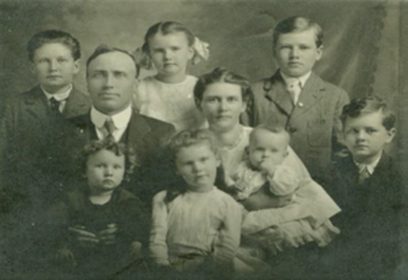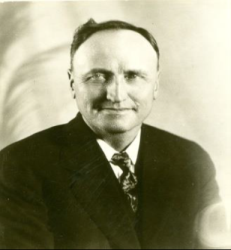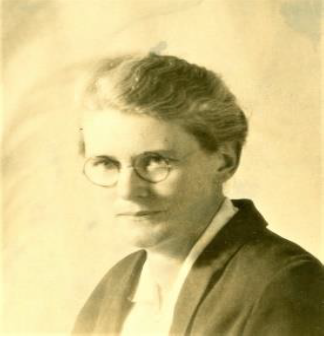View entry
Name: BAILEY, William J.



Birth Date: 19 Dec 1880 Warren Township, Belmont County, Ohio
Profession: Missionary, farmer
Married: Lillie M. b. 1 May 1884 Bristol, Tennessee
Children: George Edgar (12 Sep 1905 Deleware, Ohio); Homer Bradley (5 Apr 1917 Deleware); Paul Orrin P. (29 July 1910 Saline, Michigan); Elizabeth Lucille (13 Oct 1912 Saline); Sylvia Ruth (13 June 1915 Saline); Thomas W. (1918); Joana (1922)
General Information:
KAD 1922 has W.J. Bailey, Kedong Escarpment, Hut the same
https://au-archives.hykucommons.org/downloads/f86da3cc-d986-4b7e-84cf-ee80c798447d?locale=en The Beginning of Church of God Missions in Kenya and the Early Missionaries who Served at Ingotse Mission in 1912, the Missionary Board had directed Samuel Joiner to go to Africa to find a location for a mission station. This plan was delayed by World War I, so it was not until 1921 when the Kramers brought news of Mr. Baker’s offer, that the trip was finally undertaken. That summer, after a tour of the Holy Land, Samuel Joiner boarded a ship in Egypt bound for Mombasa, and went on to Nairobi by train, where he met Bro. William J. Bailey. Earlier in 1920, W. J. Bailey had submitted his application to the Missionary Board. He had a strong conviction that God was calling him to be a missionary in Africa. He felt that God had especially provided the money for him to go and had relieved him from all temporal and financial responsibilities, so that he could go. He said, “How can I answer God if I do not go?” Although they respected his fine, submissive spirit, he was not appointed as a Church of God missionary. They assured him of their Christian love and fellowship, and let him go on his own responsibility.
Apparently William J. Bailey, with his wife, Lilly, and their family had gone to Africa soon thereafter, and in 1921 when Samuel Joiner arrived, they were living at Kijabe, the Africa Inland Mission station 25 miles west of Nairobi. After spending a few days at Kijabe with the Bailey family and going on a hunting safari, Mr. Joiner, accompanied by Mr. Bailey, took the train to Kisumu on the northeast shore of Lake Victoria. Early on October 27, 1921, they set out with four porters for the twenty-three mile walk to Bunyore and the Kima mission station. They arrived about sundown, tired and hungry, and met Mr. and Mrs. Keller, who were in charge at the time.
The men found that the mission property, held on a ninety-nine year lease, consisted of thirty acres with several buildings, including two residences, stone and brick school classrooms and dormitories with grass roofs, a stone 20’ x 60’ chapel, and various other temporary buildings. Being favorably impressed after inspecting the mission, Mr. Joiner and Mr. Bailey left Kisumu on November 14 to travel to Johannesburg, South Africa to meet personally with Mr. Baker. They were welcomed warmly by Mr. Baker, and visited until late in the evening discussing the transfer of the mission and the Church of God theology. The next morning, Mr. Baker signed the legal documents of transfer, in the name of the Lord, to the Church of God Missionary Board – free of charge. Samuel Joiner wrote, ”We were now ready to start for our homes, Mr. Bailey for Kijabe, and I for Anderson, Indiana, by way of Cape Town and South Hampton, England.
Apparently, when William Bailey arrived in British East Africa in 1920, he was able to lease a 5000 acre farm, possibly somewhere around Kijabe. The lease agreement stipulated that he would have the option to buy the land in five years if he cleared 100 acres and would pay 300 pounds sterling every March, or 1700 pounds a year for ten years. In January of 1922, Mr. Bailey sent a proposal to the Missionary Board, suggesting that he could use this farm for training some African workers, and the profits derived from crops that were raised would be sufficient to support missionaries and the endeavors of the mission station in western Kenya. The Missionary Board did not vote to approve this project.
It is unclear how long William tried to make the leased farm productive. At some point he abandoned that project and began working with the Church of God mission at Kima. It was decided that a resident missionary was needed at the north station, now called Ingotse, to stabilize the work there, so William and Lilly Bailey accepted that assignment. The Missionary Board gave them some support without the official status of missionaries. The Baileys moved to Ingotse in June of 1924. The Baileys had seven children, so they built a large house at Ingotse to accommodate the family. The house was a two story building, brick below and frame above, having five rooms on the first floor and six spacious bedrooms on the second floor. There was a large, unfinished attic and a back porch. William Bailey built the church at Ingotse. Since there were many rocks close at hand, the lower part of the walls was laid up with stones, and the rest of the walls were made of a framework of poles, filled and plastered with mud, using the traditional style of building, complete with a thatched grass roof.
The Baileys started a primary school for the children who lived near the mission and built a three room school in which to conduct classes. Another small building was used by Mrs. Bailey for a lying-in ward to treat sick people. William Bailey made two trips to the Suk people lived 150 miles north of Ingotse. He hoped that the Missionary Board would sponsor a mission to reach that area with the gospel.
In 1927, the Baileys were given permission to go on furlough. When they returned to the field, the next year, they were granted full status as Church of God missionaries by the Missionary Board and were commended for faithfully serving over the last several years.
